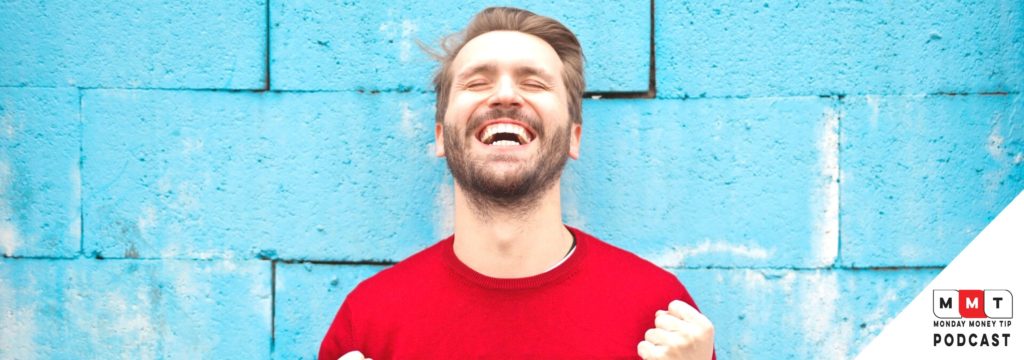Tools
Pay Cash For Next Christmas (or a Vacation!)

Happy Monday! It’s my favorite day of the week because another episode of the Monday Money Tip Podcast is LIVE! Are you making progress when it comes to budgeting, but an unexpected expense blows up your budget? On today’s episode, we’re helping you figure out how to prevent issues (like car repairs, Christmas or vacations) from messing with your financial progress. In our Current Money Events segment, we’re sharing tips that I’ve learned from budgeting for 200 consecutive months. Our success story comes from Cody, who was able to eliminate a car payment.
Find more episodes of the Monday Money Tip Podcast HERE. Please let us know what you think by leaving us a rating!
Email info@iwbnin.com to ask questions or share success stories.
NOW AVAILABLE TO DOWNLOAD:
iTunes
Stitcher
Spotify
Website
YouTube
About the Episode:
- Today, we’re answering: “We need your help. We are pretty good at budgeting, but it seems like right when we have started to make progress, an unexpected expense blows up our budget – things like a car repair or an insurance bill that is due every six months. Can you help us figure out how to prevent these issues from messing with our financial progress?”
- In our Current Money Events segment, we’re sharing tips that Joe has learned from budgeting for 200 consecutive months.
- Our success story comes from Cody, who was able to eliminate a car payment.
Resources:
I Was Broke. Now I’m Not. Participant Kit + FREE Access to Online Study
I Was Broke. Now I’m Not. Group Study DVD
I Was Broke. Now I’m Not. Tools
TOOLS: Budgeting
TOOLS: Known, Upcoming, Non-Monthly Expense Calculator
Next Steps: Banking
IWBNIN Ladder
20/20 MONEY: Gaining Clarity For Your Financial Future
Verse: “The plans of the diligent lead to profit, as surely as haste leads to poverty.” – Proverbs 21:5
Related Monday Money Tip Podcast Episodes:
Episode 32: How to Have a Debt-Free Vacation
Episode 33: How to Never Have a Car Payment
Episode 61: The I Was Broke. Now I’m Not. Ladder – Explained
Episode 83: Money Saving Tips
Great Money Apps

It’s my favorite day of the week because another episode of the Monday Money Tip Podcast is LIVE! We live in a technology-driven world, and in today’s episode, we’re talking about our favorite money apps that can take your finances to the next level. Maybe we’ll share an app you already use, or perhaps you’ll discover your new favorite money app! In our Current Money Events segment, we’re updating you on mortgage rates, basic saving rates, and CD rates. Our success story today comes from Michael, who is leading a financial growth small group at his church.
It’s our goal at the end of each episode that you gain hope and encouragement in your financial journey, you’re equipped to take the next step, and that you’ve had FUN with us!
Find the Monday Money Tip Podcast HERE. Please let us know what you think by leaving us a rating!
Email info@iwbnin.com to ask questions or share success stories.
NOW AVAILABLE TO DOWNLOAD:
iTunes
Stitcher
Spotify
Website
YouTube
About the Episode:
- Today we’re answering: “What are your favorite money apps?”
- In our Current Money Events segment, we’re updating you on mortgage rates, basic saving rates, and CD rates.
- Hear a success story from Michael, who is leading a financial growth small group at his church.
Resources:
Next Steps – Banking
I Was Broke. Now I’m Not.
I Was Broke. Now I’m Not. Online Group Study
I Was Broke. Now I’m Not. Leader Kit
Mint.com
Schwab.com App
Bank of America App
Currency App
Personal Capital
Credit Sesame
IWBNIN Ladder
Quote of the Day: “A tool is only as good as its user.” “A tool is only good if it is used.”
Debt Freedom Date Calculator
Are you ready to pay off some serious debt in 2019? To say “goodbye” to the car payment, Sallie Mae and credit cards? If you said yes, the Debt Freedom Date Calculator found HERE on our website can really help you. This tool combined with the Debt Snowball Technique is how I became debt free and you can too!
Step One: Identify All Debts Owed (Lender, Amount Owed, Monthly Payment)
Make sure you list out all of the debts that you owe and how much each one is. You can check your credit report just to double check that you have no outstanding debts that you may have forgotten about.
Step Two: Sort Debts By Amount Owed (Smallest to Largest)
List your debts out by sorting the debts from smallest to largest by the amount owed. Make sure you have sorted by the amount owed and not the payment amount.
Step Three: Pay Minimum Payments on All Debts, Except The Smallest Debt
Make the minimum payment on all of the debts except the smallest one. It can be very tempting to start to attack your credit card bills or car payment but if that is not the smallest amount you owe, make minimum payments for now.
Step Four: Apply Any Extra Money to Smallest Debt
If you have leftover money in your budget, apply that to the smallest debt that you owe. The quicker you can see a victory, the more effective this technique will be!
Step Five: When Smallest Debt is Eliminated, Add Its Monthly Payment to Next Smallest Debt
Once you have paid off the smallest debt, take the payment you were allocating towards it, and apply it to your next smallest debt. That way, as you pay off more and more debts, you’re creating a debt snowball!
If you would like more information on this topic, check out this quick YouTube video HERE where I explain the technique and give visual examples.
========================================================================
Want more tips like this one? Subscribe to the Monday Money Tip Podcast HERE.
Debt Payoff Spectaculars
Did you make a resolution this year to finally off that debt that has been hanging over your head? Once that debt is gone, that payment will be freed up for you to start making progress towards your plans, hopes and dreams. If you need a visual tool that can help you gain traction in your debt freedom journey, you should check out our Debt Payoff Spectaculars found HERE on our website.
These spectaculars are incredibly easy to use and can give you a visual representation of your debt being paid off. All you have to do is take the amount of debt you owe, and divide that by the number of squares on the payoff spectacular. This will give you the amount of debt that each square represents. Each time you make a payment in that amount, color off a square!
While it may sound simple, there is something cathartic about visually marking that debt out of your life. If you’re paying off a truck, you can physically see the amount of that truck that you now own and you will find yourself wanting to color more and more squares. You might even go crazy and adjust your budget to cut your spending and allocate more towards debt!
Check out our Debt Payoff Spectaculars HERE!
========================================================================
Want more tips like this one? Subscribe to the Monday Money Tip Podcast HERE.
Known, Upcoming Non-Monthly Expenses Calculator
Have you ever prepared a budget and faithfully followed it only to have it crushed in the middle of the month because of an expense you forgot about? Does Christmas seem to creep up on you every year? Have you had to suddenly replace the tires on your car? Chances are, you answered yes to at least one of these questions.
These budget busters are called “Known, Upcoming Non-Monthly Expenses.” The reason these expenses get forgotten is because they are non-monthly so they tend to be pushed to the back of the mind until the bill suddenly comes in the mail. But when they do finally appear, they can create a financial emergency causing you to either break your budget or go into debt.
Think about what non-monthly expenses you know will come up throughout the year. Here are a couple of common expenses that people have:
- Car tires need to be replaced
- Heating & Air goes out
- Christmas
- Vacation
- Life insurance premium
- Property taxes
- Health Insurance deductible
Once you have these expenses listed out, you can plan to save monthly for them in your regular budget. Check out our Known, Upcoming Non-Monthly Expenses Calculator to do this with ease. Below is an example of the calculator in action:

By knowing what these expenses are and saving for them monthly, you’ll no longer have to “come up” with the money when the bill arrives. You will simply be able to pay the bill in cash. A cool feature of this tool is that not only does it calculate what you would need to save per month, but it also calculates the amount based on different pay frequencies. If you get paid twice per month, you would need to save $289.58 out of each paycheck. For a bi-weekly frequency, you would save $267.31. Regardless of how often you get paid, you can save accordingly and have the money available when you need it.
Tips for using the tool:
- Be sure to recalculate your monthly savings number at least once per year.
- Don’t forget more long-term expenses such as college, weddings, vehicle replacement, and major home renovations.
- Make your savings for these expenses AUTOMATIC by establishing an auto-draft.
========================================================================
Want more tips like this one? Subscribe to the Monday Money Tip Podcast HERE.